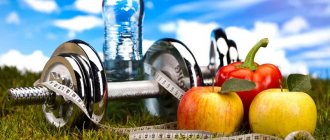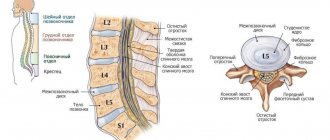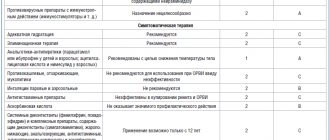Pancreatitis is a disease of the pancreas associated with the development of an inflammatory process in the organ. With this disease, there is a disruption in the flow of enzymes involved in digestion from the pancreas to the duodenum. Digestive enzymes remain in the gland itself and destroy it. The main cause of this disease is improper and unbalanced nutrition. That is why the treatment of pancreatitis is based on a properly selected diet.
General rules. Duration of the diet.
Maintaining proper nutrition is the key to a quick recovery. With this diet, you must adhere to certain rules to eliminate the possibility of complications.
General diet rules:
- Overeating should be avoided
- Meals should be fractional, at least 5-6 times a day
- Food should be warm. It is necessary to completely exclude hot and cold foods.
- Eliminate raw vegetables and fruits and fiber-rich foods from your diet.
- Food should only be prepared using recommended methods.
Causes of pancreatitis
They can be different, but in general they are associated with eating disorders:
- starvation;
- diet;
- fatty and spicy foods;
- poisoning;
- alcohol.
Also, sometimes the disease occurs due to hormonal disorders, infectious processes in the body or heredity.
Elderly people are at risk for this disease, so it is especially important for them to monitor dietary restrictions. This will protect your body from undesirable consequences, for example, when the organ begins to digest itself.
Nutrition for pancreatitis during exacerbation:
In case of exacerbation of pancreatitis, it is necessary to avoid eating any food for several days. During fasting, it is recommended to drink purified still water. The daily volume of water should be no more than 1.5-1.7 liters. After the pain and symptoms subside, you can add low-calorie food in small quantities to the diet (liquid cereals, vegetable soups, steamed fish or chicken cutlets).
If you do not follow a diet during acute pancreatitis, the disease can quickly become chronic.
Notice!
During the acute period, sanatorium-resort treatment is contraindicated: it is better to go to a hospital.
If you have a chronic
form, then you should regularly
carry out preventive treatment
.
Pancreas
If a person is healthy and happy, there is no reason to remember that a very important organ functions in his body - the pancreas . It is located behind the stomach, closely adjacent to the duodenum, between them and the spine, transversely at the level of the bodies of the I-II lumbar vertebrae. The pancreas of an adult has a length of 14-22 cm, a width of 3-9 cm, a thickness of 2-3 cm, with a mass of about 70-80 g. Why is this gland so hidden in the body?!
Already in the Talmud there is a description of the pancreas , where it is called the “finger of God.” Vesalius in 1543 writes about the pancreas: “in the center of the mesentery, there is a large glandular formation that reliably supports the very first and significant branches of the vessels.”
The pancreas is an important participant in the digestive process; it secretes the main enzymes for the digestion of fats, proteins and carbohydrates: pancreatic lipase, amylase, trypsin and chymotrypsin. The main pancreatic secretion - duct cells - contains bicarbonate ions, which are involved in neutralizing acidic gastric contents. The main excretory duct, which opens into the duodenum, receives pancreatic secretions that accumulate in the interlobular ducts. Enzymes are released in an inactive form, this prevents enzyme damage to the pancreas, which can be observed with pancreatitis. In response to the secretion of pancreatic juice, the cells of the stomach and duodenum produce active substances of a hormonal nature - gastrin, cholecystokinin and secretin, which ensures hormonal regulation of the exocrine function of the pancreas.
Islet cells - the islets of Langerhans, located between the lobules, function like endocrine glands, secreting glucagon and insulin directly into the bloodstream - hormones that regulate carbohydrate metabolism. Glucagon increases and insulin decreases blood glucose levels.
Reasons for the development of pancreatitis: frequent consumption of spicy, fried, fatty foods, overeating, alcohol abuse, neuropsychic overexcitation, previous viral infections and intoxication.
The most important symptom of pancreatitis is burning pain in the upper abdomen, in the left hypochondrium, sometimes radiating to the heart area, to the spine, which can last from several hours to several days.
Attacks are characterized by severe pain, loss of appetite, weakness, belching, flatulence, and rumbling in the stomach . Nausea and vomiting are often associated; there may be a drop in temperature and tremors in the body. Diarrhea persists for a long time , even with proper nutrition. Mushy stools containing undigested food particles may have a foamy consistency with an unpleasant odor. The patient may lose weight very sharply. This type of pancreatitis in some cases leads to the development of diabetes mellitus.
Acute pancreatitis most often treated , because... with severe pain, loss of consciousness or shock may develop. Chronic pancreatitis requires long-term complex treatment and medical supervision.
List of permitted products:
| Cereals (buckwheat, oatmeal, rice, semolina) | The cereal must be boiled in water, followed by the addition of milk and a small amount of butter. |
| vegetables | Vegetables can be consumed as first courses (vegetable soups, puree soup) or in the form of chopped boiled pieces. Allowed fruits include potatoes, carrots, green peas, zucchini, pumpkin, beets and cauliflower. |
| fruits | Raw fruits should not be eaten. You can eat fruit jams, marshmallows, baked apples, compotes, and jelly. |
| meat | You can eat lean meats: beef, veal, rabbit and chicken. The meat is steamed and prepared in the form of soufflés or minced meat cutlets. |
| fish | Steamed white river fish is allowed in the food. |
| egg | Allows you to prepare a steam omelet from 1 chicken egg or 3 quail eggs. |
| Dairy | Dairy products should have minimal fat content |
| bread | You can eat a small amount of wheat bread 2-3 days old |
Why are enzymes so important in digesting food?
Such elements directly affect digestion. They are produced by the stomach, pancreas and small intestine. Each breaks down certain components of food.
With pancreatitis, the pancreas practically stops synthesizing enzymes, which is where their deficiency occurs. Digestive functions are then disrupted and undesirable reactions occur, such as diarrhea, vitamin deficiency, anemia and dehydration. The patient may also experience sudden weight loss, heartburn, nausea and vomiting. Due to prolonged enzymatic deficiency, the body is completely depleted, which is why it is so important to seek qualified help in a timely manner.
List of fully or partially restricted products:
| Dates, grapes, bananas | Causes bloating |
| Mushrooms, legumes, white cabbage | Contains coarse fiber |
| Smoked, salted, fast food, products containing preservatives and dyes | Irritate the mucous membrane of the digestive tract |
| By-products (liver, tongue, heart, kidneys, etc.) | Contains a lot of cholesterol |
| Any fried or fatty foods | Lead to exacerbation of the disease |
| High fat dairy products | High risk of exacerbation or complication of the disease |
results
By following a diet, namely excluding foods that increase acid formation, you reduce the load on the organ. If the form of the disease is mild, you still need to stick to this diet for several months. General recommendations should be followed throughout your life. This will prevent exacerbation of the disease.
Thus, proper nutrition and enzyme therapy will help replenish eczymes and reduce the unpleasant manifestations of the disease. Remember that you must strictly follow all the recommendations of the treating doctor, completely avoiding amateur treatment.
Example of a weekly menu
An approximate menu for a week for pancreatitis of the pancreas may look like this:
| Breakfast | Lunch | Dinner | Afternoon snack | Dinner | |
| Monday | Steam omelette, curd soufflé, drink | Cheese galettes, stewed apple | Semolina soup with grated carrots, buckwheat with boiled zucchini, drink | Grated apple | Oatmeal, beet salad, oven-baked apple |
| Tuesday | Puree rice porridge, cottage cheese, drink | Apple puree | Buckwheat soup with vegetables, steamed chicken dumplings, jelly | Steamed egg white omelet, diluted juice | Steamed fish cutlet, garnished with mashed potatoes, drink |
| Wednesday | Liquid milk porridge from rice, protein omelet, drink | Cottage cheese with sweet jelly | Cream of cauliflower soup, chicken soufflé, drink | Stewed apple or pear | Steamed fish dumplings with vegetable puree, drink |
| Thursday | Steam omelette, milk buckwheat (mashed), tea | Cottage cheese | Carrot cream soup, beef cutlets, garnished with rice porridge, drink | Juice with biscuits | Steamed fish cutlets with vegetable puree, compote |
| Friday | Porridge with butter, steamed protein omelette, cheese, drink | Oven-baked cheesecakes with carrots, sweet juice | Meatball soup, meat puree with pumpkin puree, drink | Cottage cheese pudding | Steamed fish cutlets with cauliflower, drink |
| Saturday | Oatmeal, cottage cheese, drink | Soft-boiled egg, juice | Pumpkin soup seasoned with sour cream, beef stroganoff with carrot puree, drink | Biscuits, juice | Fish dumplings with rice porridge, drink |
| Sunday | Semolina pudding topped with jelly, cottage cheese, drink | Protein omelet, juice | Buckwheat soup, chicken soufflé, drink | Sweet jelly with dry cookies | Boiled fish with rice porridge, compote. |
At night you need to drink a glass of kefir or yogurt. Since dietary nutrition for inflammation of the pancreas imposes significant restrictions and prohibits the use of many spices, it is important to learn how to choose the right products to diversify the menu. After all, food for pancreatitis should not only be healthy, but also tasty.
Nutritionists recommend the following combinations:
| Days of the week | Grocery set |
| Monday | Veal, potatoes, oatmeal, carrots, apple |
| Tuesday | Chicken, fish, small vermicelli, cottage cheese, apple, cookies, rice |
| Wednesday | Rabbit, chicken, buckwheat, pumpkin, carrots, nuts |
| Thursday | Turkey, pollock, semolina, carrots, onions |
| Friday | Beef, cheese, dates, chicken, buckwheat, croutons |
| Saturday | Rice, zucchini, carrots, egg white, chicken, kefir, beef |
| Sunday | Potatoes, semolina, rolled oats, dates, dried apricots, cookies, cod |
For drinks you can use:
- weakly brewed tea - black, green;
- compotes from fresh and dried fruits;
- a flock of rose hips.
Fasting days
For diagnosed chronic pancreatitis, nutritionists recommend arranging fasting. On such days, patients eat only one type of food.
One of the options for a fasting day is oatmeal.
For inflammation of the pancreas, you can practice the following one-day mono-diets:
- Oatmeal. You need to boil 200 grams of oatmeal in water. Divide it into 6 parts. During the day you need to drink 400 ml of rosehip decoction.
- Cottage cheese. So, season 600 grams of cottage cheese (low-fat) with sour cream (60 grams). Divide into 4 servings. 400 ml of rosehip decoction are allowed.
- Fruit and curd. Mix prunes (400 grams) and the same amount of low-fat cottage cheese. Eat in 6 servings.
- Rice-compote. Boil 1.5 liters of compote from apples. Cook porridge from 50 grams of rice. Sweeten it a little. Drink compote during the day. Eat porridge in the morning and evening.
- Watermelon. During the day you need to eat 1.5 watermelon pulp (the rind is not taken into account) in five to six doses.
- Pumpkin. Bake 2 kg of pumpkin pulp in the oven. Divide it into 5 steps.
- Apple. Bake 1.5 kg of apples in the oven and eat them the day before.
Physical activity is prohibited these days.
Advantages and disadvantages
| pros | Minuses |
|
|











